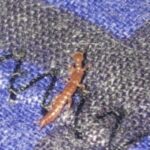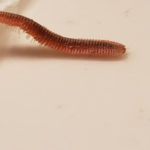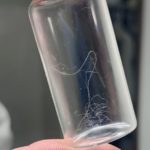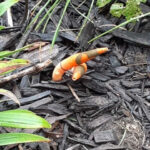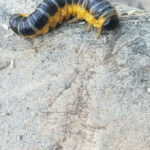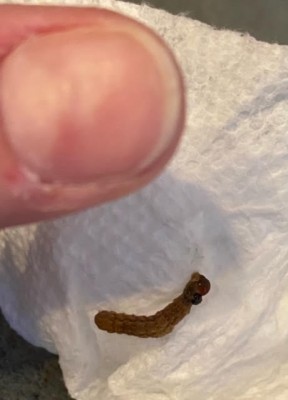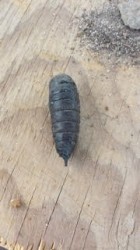So you think that you know all that you need, can, or want to know about earthworms? Check out these 10 great earthworm facts!
1. Every worm can be both a mom and a dad – but not with itself. Each individual is a “hermaphrodite”, an animal with both male and female sex organs. Each produces both sperm and eggs, but each worm’s eggs must be fertilized by the sperm of another individual – they cannot fertilize themselves. So earthworms must still find sexual partners, but both will receive sperm from the other. And in one final twist, earthworm mating is separate from reproduction! After mating, each worm will crawl away carrying the sperm of its partner, but not until later will it actually use those sperm to fertilize its eggs.
2. Look at the repeating rows of bumps along an earthworm’s body. Like most types of animals – including vertebrates, but not roundworms! – earthworms are segmented. Their body plan consists of simple, repeating units, each with a similar system of muscles, blood vessels, nerves, and so on.
3. Earthworms cannot see or hear. They lack even primitive eyes and have no organs to detect the vibrations of sound. They do, of course, have a sense of touch, and they have the chemical senses of taste and smell.
4. Earthworms breathe through their skin. Unlike many animals that exchange oxygen and carbon dioxide across their skin, however, earthworms do have a circulatory system to carry these gases to and from deeper tissues. This property allows them to grow relatively large – in some cases, truly gargantuan. The Giant Gippsland Earthworm of Australia can reach a diameter of an inch and a length of ten feet!
5. Nobody is sure why earthworms come to the surface in the rain, but there are two ideas. They may not be able to get enough oxygen when submerged in water, or they may take advantage of slippery conditions at the surface to migrate to new territory faster than they could by burrowing. Also, at least one species is known only to mate at the surface.
6. Not all worms move by inching, but earthworms do. Roundworms crawl by wriggling back and forth, but earthworms move by sequentially constricting each segment along the length of the body. In addition, they have a set of microscopic spines in each segment that help them dig into the soil as they crawl through.
7. Earthworms produce what is probably the most valuable poop in the world. They actually eat their way through packed soil, depositing behind them rich compost, which they have digested from nonliving organic matter. The result is the biologically crucial aeration and enrichment of the soil. In the judgment of no less a naturalist than Charles Darwin himself, “It may be doubted whether there are any other animals which have played so important a part in the history of the world, as have these lowly creatures.”
8. Earthworms are found almost everywhere, in nearly every environment on Earth – except deserts and the poles. Despite their name, not all species actually live in soil; some are restricted to manure, or muddy sediments, or even certain types of rotting trees. In any case, there is an enormously huge number of individuals: in the richest crop soils, estimates range up to hundreds of earthworms per square yard.
9. Almost all of the earthworms in North America are not native, but were introduced from the Old World. Not only have invasive earthworm species almost completely displaced the former native species, but most North American forests originally had no earthworms at all.
10. Earthworms are extremely sensitive to environmental pollutants. One unfortunate effect of their sensitivity is that pesticides and herbicides often unintentionally eliminate earthworms. Their loss can lead to dramatically lower soil quality. However, one useful effect is that the number of earthworms in a certain area can be used as an indicator of the amount of toxic contamination in that soil.
Recommended Reading (click on picture):
All About Worms is always free, always reader-supported. Your tips via CashApp, Venmo, or Paypal are appreciated! Receipts will come from ISIPP Publishing.




